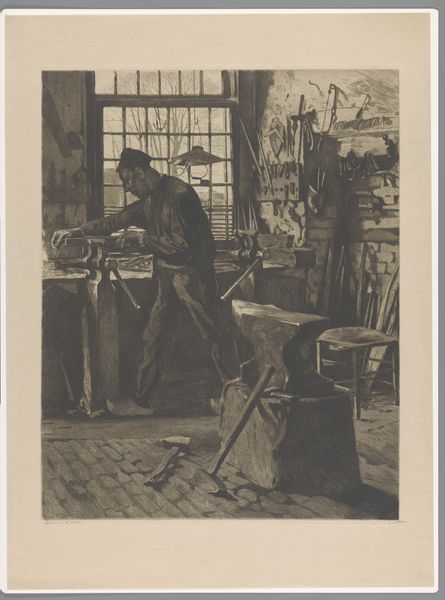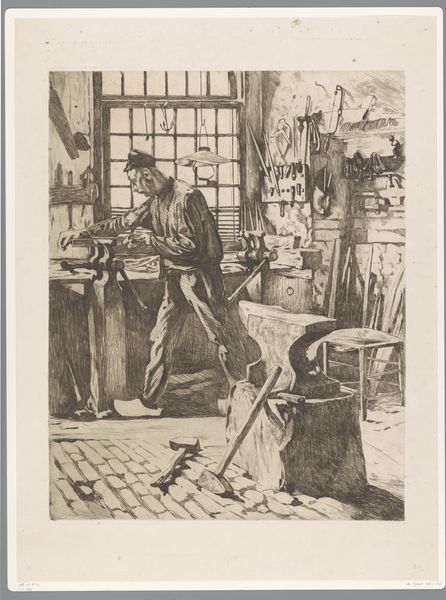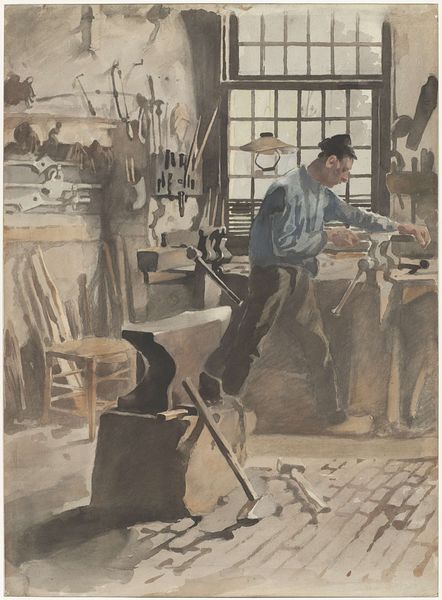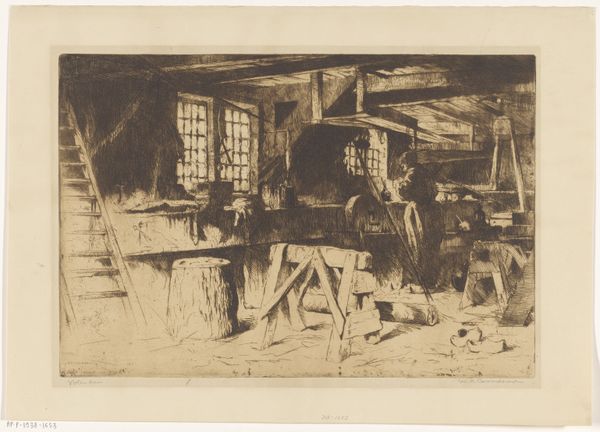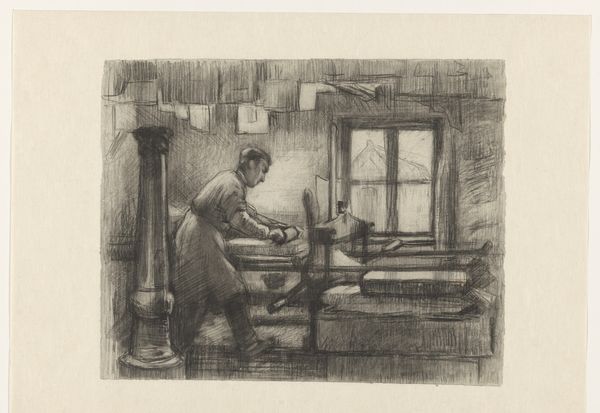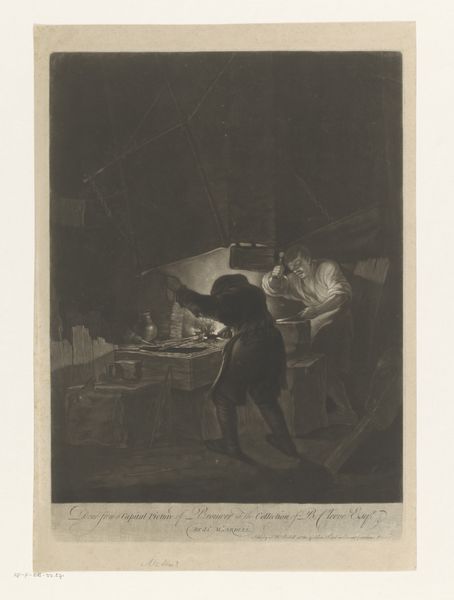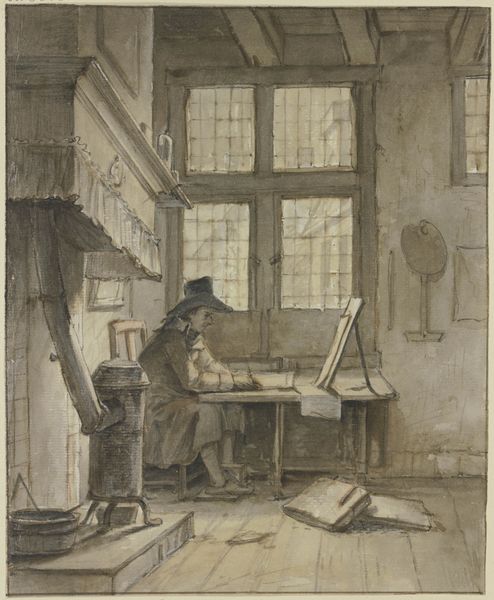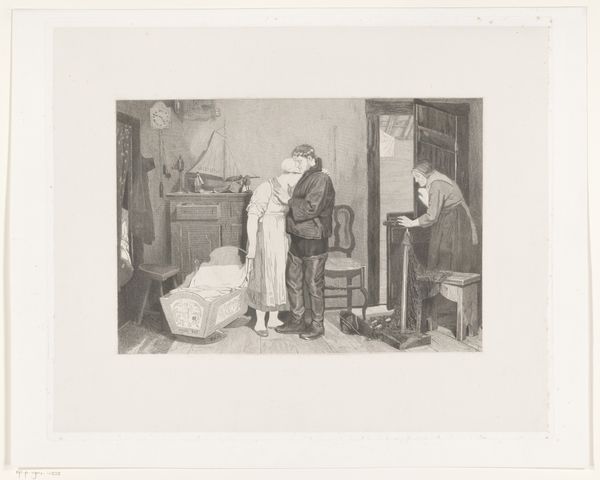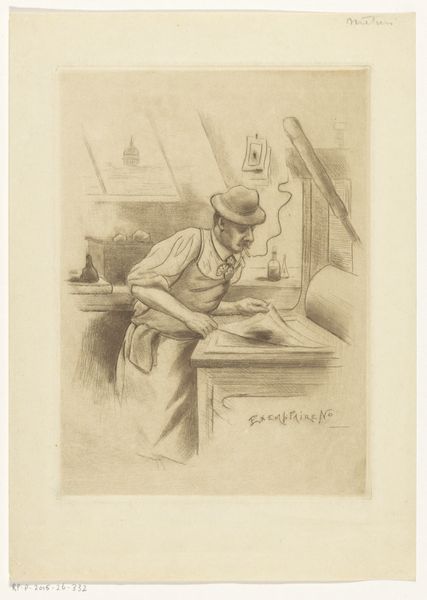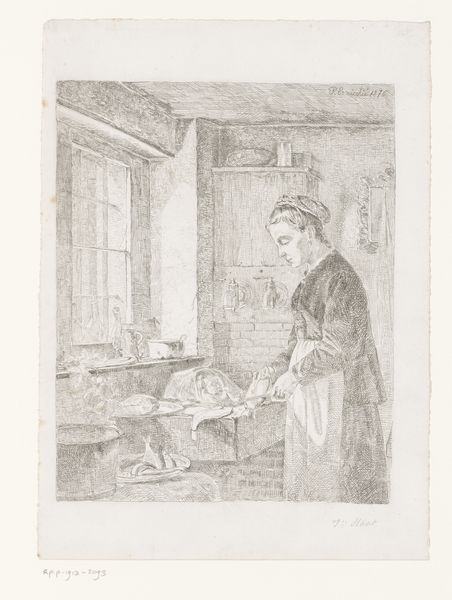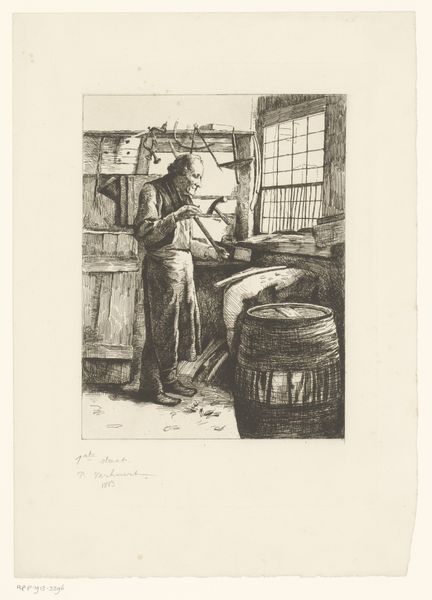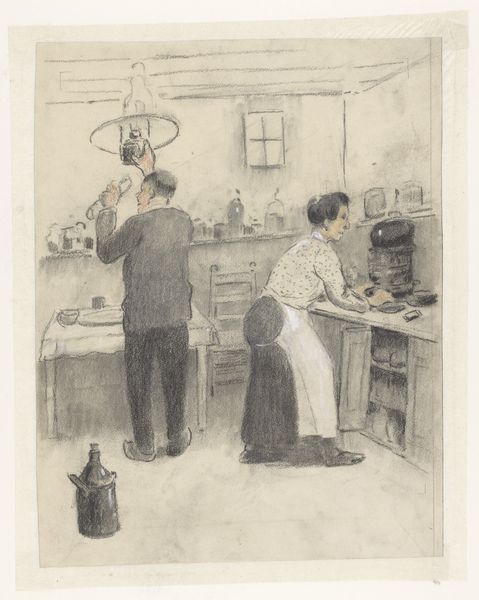
drawing, ink, pencil, charcoal
#
drawing
#
dutch-golden-age
#
landscape
#
charcoal drawing
#
ink
#
pencil
#
genre-painting
#
charcoal
#
charcoal
#
watercolor
#
realism
Dimensions: height 730 mm, width 538 mm
Copyright: Rijks Museum: Open Domain
Editor: This is Willem Witsen’s “Smith in his Smithy,” dating roughly from 1870 to 1923. It’s a drawing, using charcoal, ink, and pencil, and it’s currently housed at the Rijksmuseum. The tonal range of the drawing is just captivating. How do you interpret the work's formal qualities, particularly the use of light and shadow? Curator: Indeed. Notice how Witsen orchestrates light not as mere illumination, but as a structural element. The bright window throws the rest of the scene into nuanced darkness. The strong horizontal and vertical lines create a sense of order and confinement, emphasizing the artisan's repetitive task. Consider the varying textures achieved through charcoal, ink, and pencil; it is almost a dialogue between the rough texture of the anvil and the smoother surfaces elsewhere. What feelings are evoked by this interplay of textures and the overall muted palette? Editor: The textures create a believable grittiness, contrasting against the geometric clarity of the architecture. But I am struck by the very narrow dynamic range – there are barely any true whites, only shades of grey, but the work has impressive visual depth! What does it tell us about the intention of the artwork? Curator: It's precisely in that controlled range of values where the power lies. By restricting the tonal range, Witsen intensifies the focus on subtle gradations of light. Semiotically, darkness often suggests introspection or obscurity. So why make the worker in the smithy the main focus in darkness? Editor: Possibly to ennoble labor? Or to evoke Romantic ideas about the importance of crafts threatened by industrialisation. What has really helped me today is realising the structural importance of something I almost missed at first, which is the use of light and tonal range. Thanks so much for sharing your insights. Curator: It has been equally enlightening. To examine art this way—solely as structure, composition and execution—is in many ways a purer encounter. The meaning then emerges more vividly for me, too.
Comments
No comments
Be the first to comment and join the conversation on the ultimate creative platform.
